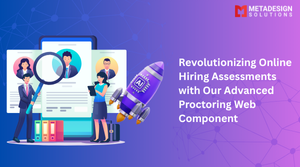1.Introduction
Te world of artificial intelligence (AI) has rapidly evolved over the past few decades, giving rise to various subfields, each with its unique methods, applications, and potential. Among these, the terms AI, Machine Learning (ML), Generative AI (GenAI), and Deep Learning are often used interchangeably, but they represent distinct concepts. Understanding these differences is crucial to grasping how intelligent systems are built and how they impact our daily lives.
In this blog, we’ll explore these four technologies, breaking down their meanings, differences, and applications in real-world scenarios.
- Artificial Intelligence (AI)
Defining AI
Artificial Intelligence development services refers to the ability of a machine or computer system to simulate human-like intelligence. In simple terms, AI is the development of algorithms that allow machines to perform tasks that usually require human intelligence. These tasks include reasoning, learning, decision-making, problem-solving, language understanding, and perception.
AI can be classified into two categories:
- Narrow AI (Weak AI) – This is AI designed to perform a specific task, such as voice assistants (Siri, Alexa) or recommendation systems (Netflix, Amazon).
- General AI (Strong AI) – This type of AI aims to replicate human intelligence to perform any intellectual task that a human can do. However, true General AI remains a theoretical concept, and we are far from achieving it.
Types of AI
AI can be further divided into three types based on its capabilities:
- Artificial Narrow Intelligence (ANI): This is the most common form of AI today. It is specialized in a specific task and performs it well but cannot perform beyond its predefined scope. Examples include facial recognition and speech recognition systems.
- Artificial General Intelligence (AGI): A more advanced form of AI that can understand, learn, and apply intelligence across various tasks at a human-like level. AGI is still theoretical and has not been fully realized.
- Artificial Superintelligence (ASI): This refers to a hypothetical AI that surpasses human intelligence in every aspect, including creativity, problem-solving, and social intelligence.
Applications of AI
AI is already integrated into numerous industries, transforming business processes and improving efficiency. Some common AI applications include:
- Healthcare: AI-driven tools for diagnosis, personalized treatment, and drug discovery.
- Finance: Fraud detection systems, algorithmic trading, and risk assessments.
- Automotive: Autonomous vehicles and traffic management systems.
- Retail: Chatbots, recommendation engines, and inventory management.
- Entertainment: Personalized content recommendations, gaming, and virtual assistants.
Challenges of AI While AI promises substantial benefits, it comes with its challenges, including:
- Ethical concerns: AI systems can perpetuate biases, leading to unfair outcomes in areas like hiring or law enforcement.
- Job displacement: Automation powered by AI could lead to significant job losses across various industries.
- Complexity and cost: Developing advanced AI systems requires significant resources, both in terms of data and computational power.
- Machine Learning (ML)
Defining Machine Learning
Machine Learning is a subset of AI that focuses on developing algorithms that enable machines to automatically improve their performance with experience. Instead of following explicit instructions, ML systems use data to learn and make predictions or decisions without being programmed to perform specific tasks. In essence, ML allows machines to “learn from data.”
Types of Machine Learning
Machine Learning development services can be divided into three primary types based on the learning process:
- Supervised Learning: In supervised learning, models are trained on labeled data, meaning the input data comes with known output labels. The goal is to learn a mapping from inputs to outputs. Examples include spam email detection and handwriting recognition.
- Unsupervised Learning: This type involves training models on unlabeled data, where the system must find hidden patterns or structures within the data. Common applications include clustering (grouping similar items) and anomaly detection.
- Reinforcement Learning: In reinforcement learning, an agent learns by interacting with its environment. The agent takes actions and receives rewards or penalties based on its actions, gradually learning the best strategy for maximizing rewards. This type is commonly used in robotics, gaming, and autonomous systems.
ML Algorithms and Techniques Some popular machine learning algorithms include:
- Linear Regression: Used for predicting continuous values.
- Decision Trees: Used for classification tasks.
- K-Means Clustering: A popular unsupervised learning algorithm for clustering.
- Support Vector Machines (SVM): Used for classification and regression tasks.
- Neural Networks: These can be simple or deep and are used for a variety of tasks, including classification and speech recognition.
Applications of Machine Learning
ML has a profound impact across many sectors:
- Natural Language Processing (NLP): ML helps machines understand and generate human language, used in applications like speech-to-text and chatbots.
- Medical Diagnosis: ML models can assist doctors by predicting disease outcomes and recommending treatments.
- Financial Modeling: ML algorithms help predict stock prices, detect fraud, and assess risks.
- Advertising: Personalized ads powered by ML algorithms target customers based on their behavior and preferences.
Challenges in Machine Learning
While powerful, ML also faces challenges:
- Data quality and quantity: ML algorithms require large amounts of high-quality data to perform accurately.
- Overfitting and underfitting: Models can either be too complex (overfitting) or too simple (underfitting), leading to poor generalization.
- Interpretability: Many ML models, particularly deep learning models, are often regarded as “black boxes,” meaning it’s difficult to understand how they make decisions.
- Generative AI (GenAI)
Defining Generative AI
Generative AI refers to a category of AI models that can generate new content—such as text, images, music, or even code—by learning from existing data. Unlike traditional AI systems that are designed to classify or predict outcomes based on input data, generative AI creates new data that is similar to the training data. This is made possible by models such as Generative Adversarial Networks (GANs), Variational Autoencoders (VAEs), and transformers.
Generative AI has gained significant attention in recent years, especially with the rise of ChatGPT, DALL·E, and other AI-powered tools that can generate human-like text, images, and videos.
How Generative AI Works
Generative AI models are trained on large datasets and learn the underlying patterns and structures of the data. Once trained, these models can generate new data that adheres to the same patterns. For example, a generative AI model trained on thousands of paintings can generate new artwork that resembles the style of the original dataset, without copying it directly.
A few popular models in Generative AI include:
- Generative Adversarial Networks (GANs): GANs consist of two neural networks—a generator and a discriminator—that compete against each other. The generator creates new data, while the discriminator evaluates how realistic the data is. The process continues until the generator produces highly realistic content.
- Transformers: Models like GPT (Generative Pretrained Transformer) are used to generate natural language text. These models are based on attention mechanisms and can generate coherent and contextually relevant text based on a prompt.
- Variational Autoencoders (VAEs): VAEs are used for generating images or data that can be sampled from the learned distribution.
Popular Generative AI Models
- GPT (Generative Pretrained Transformer): GPT models, such as GPT-3 and GPT-4, are used for text generation. These models can write essays, generate code, answer questions, and even create poetry.
- DALL·E: A model that generates images from textual descriptions. For example, you can input “a futuristic cityscape” and the model will generate an image that fits the description.
- DeepDream: This model generates surreal and dream-like images by enhancing patterns in images and creating abstract content.
- StyleGAN: A GAN model used for generating realistic images of faces, objects, and scenes.
Applications of Generative AI
Generative AI is revolutionizing various industries by enabling the creation of content that was once labor-intensive. Its applications include:
- Content Creation: Generative AI tools like GPT-3 help in generating articles, blogs, scripts, and even books. Creative AI tools like DALL·E and Artbreeder are used for generating unique art and designs.
- Entertainment: In the film and gaming industry, generative AI can create new characters, scenes, and plots. It can also be used to generate music or sound effects.
- Healthcare: Generative AI is being used to generate synthetic medical data for training healthcare models without compromising patient privacy.
- Advertising: AI can generate tailored advertisements based on customer data, creating personalized and dynamic content.
- Product Design: In industries like fashion and automotive, generative design algorithms help create product prototypes based on specific input criteria.
Want Faster, Error-Free Flutter Releases?
Book a session to implement a robust CI/CD pipeline for your app.
Challenges of Generative AI
Despite its exciting potential, Generative AI also faces challenges:
- Quality Control: The content generated by AI can sometimes be low quality or nonsensical, especially if the model is not trained properly.
- Ethical Concerns: Generated content can be used maliciously, such as creating deepfakes or spreading misinformation.
- Data Dependency: Generative AI models require vast amounts of data for training, which can be a barrier for industries with limited access to such datasets.
- Deep Learning
Defining Deep Learning
Deep Learning is a subset of Machine Learning that mimics the human brain’s neural networks to process data. It involves multi-layered neural networks—also known as artificial neural networks (ANNs)—that are capable of learning from large amounts of data. These networks consist of multiple layers of nodes, or neurons, that process and transform inputs to produce an output.
Deep Learning models are primarily used for tasks that involve large volumes of complex data, such as image recognition, speech processing, and natural language understanding. Unlike traditional machine learning models, deep learning models can automatically learn features from raw data without the need for manual feature engineering.
Neural Networks and Deep Learning
A neural network is composed of layers of interconnected nodes, each representing an artificial neuron. These neurons simulate the way biological neurons in the human brain process information. A deep learning model typically consists of several layers:
- Input Layer: The initial layer that receives the raw data.
- Hidden Layers: These layers perform computations and transformation of the input data, passing the results to the next layer.
- Output Layer: The final layer that produces the result, such as a classification label or a predicted value.
Deep learning models are particularly effective in dealing with unstructured data like images, audio, and text, where traditional machine learning techniques struggle.
Differences Between Machine Learning and Deep Learning
While both Machine Learning and Deep Learning fall under the umbrella of AI, there are some key differences between them:
- Data Requirements: Deep learning requires vast amounts of data to perform well, while traditional machine learning can work with smaller datasets.
- Feature Engineering: In machine learning, the features used for training the model must be manually selected by domain experts. In deep learning, the model automatically learns relevant features from raw data.
- Complexity: Deep learning models are generally more complex and require significantly more computational power compared to traditional machine learning models.
- Interpretability: Deep learning models are often considered “black boxes” because they are difficult to interpret. In contrast, some machine learning models, such as decision trees, are more interpretable.
Applications of Deep Learning
Deep learning has achieved remarkable success in various domains:
- Computer Vision: Deep learning models are widely used in image recognition, object detection, and facial recognition.
- Natural Language Processing (NLP): Deep learning models, such as transformers, are used for machine translation, sentiment analysis, and text generation.
- Speech Recognition: Deep learning is used in voice assistants (e.g., Siri, Alexa) and transcription services.
- Autonomous Vehicles: Deep learning models help self-driving cars understand their environment and make decisions in real-time.
- Healthcare: Deep learning algorithms are used for medical image analysis, drug discovery, and disease diagnosis.
Challenges of Deep Learning
Despite its successes, deep learning faces several challenges:
- Data Dependency: Deep learning requires large, labeled datasets to train effectively.
- Computational Cost: Training deep learning models requires substantial computational resources, including specialized hardware like GPUs.
- Interpretability: Like other advanced AI models, deep learning models are complex and difficult to interpret, which can be problematic in critical applications like healthcare or finance.
- Key Differences Between AI, ML, GenAI, and Deep Learning
Now that we’ve explored the individual components—AI, ML, GenAI, and Deep Learning—let’s compare them based on the following dimensions:
- Scope of Intelligence:
- AI encompasses all kinds of intelligent systems, including both machine learning models and rule-based systems.
- ML focuses on systems that learn from data and improve over time.
- GenAI is specialized in generating new content and data rather than merely processing or classifying existing data.
- Deep Learning is a subset of ML that deals with large-scale neural networks and complex data.
- Role in Automation:
- AI automates decision-making and intelligent behavior.
- ML automates learning from data to improve models over time.
- GenAI automates content creation and generation.
- Deep Learning automates feature extraction and learning in high-dimensional data.
- Data Dependency:
- AI can operate with limited data if rule-based systems are used.
- ML requires large datasets to train models.
- GenAI also requires large datasets and can generate new data.
- Deep Learning demands even more data and computational power.
- Complexity and Processing Power:
- AI can range from simple to highly complex, depending on the system.
- ML can be less complex but requires good-quality data.
- GenAI models are complex and require robust computational power.
- Deep Learning is the most computationally intensive, needing specialized hardware.
- Learning Process:
- AI can include both manual programming (rule-based) and machine learning.
- ML focuses on learning patterns from data.
- GenAI learns from data to generate new content.
- Deep Learning learns from raw data, with little to no feature engineering required.
- Conclusion
The world of AI is vast and evolving rapidly, with each subfield—ML, GenAI, and Deep Learning—playing unique roles in pushing the boundaries of what machines can do. While AI encompasses all aspects of intelligent behavior, Machine Learning focuses on learning from data, Generative AI specializes in content creation, and Deep Learning dives deeper into complex data processing.
As AI continues to develop, the line between these fields may blur, but understanding the distinctions today will help you make informed decisions about which technology to use for specific problems.
The future holds exciting possibilities, from smarter AI systems to more realistic generative models and breakthroughs in deep learning. With the right tools and understanding, we are just beginning to unlock the full potential of these advanced technologies.
Related Keyphrase:
#ArtificialIntelligence #MachineLearning #DeepLearning #GenerativeAI #AIvsML #AIExplained #MLExplained #GenAI #AIInnovation #AIRevolution #MLInsights #DeepLearningModels #AIConcepts #TechExplained #AIApplications #MLTools #AIForBeginners #MLDevelopment #AIvsDeepLearning #AIInsights #AIandML #AITrends #FutureOfAI #TechForGood



